Commas are one of the most versatile tools in the English Language. As a result, how to use commas correctly is one of the most difficult things to master. In this ultimate guide, we’ll tell you exactly when you need to use a comma and when you don’t. We’ll also give you easy tricks to know how to use commas correctly every time.
Main How to use Commas Takeaways:
- A comma is a punctuation mark that creates a soft pause.
- A comma separates words, not letters.
- Use a comma to separate coordinate adjectives (We enjoyed the warm, sunny weather).
- Use commas to separate items in a list. Use the Oxford or serial comma before the last item in a list to clarify the list.
- Put a comma after introductory words, phrases, and clauses.
- Nonrestrictive (nonessential clauses) need commas. These can include appositives, negations, interrupters, parenthetical elements, and question tags.
- Restrictive (essential) clauses don’t need commas.
- When a conjunction like and, but, or, yet, for, nor, and so separates two independent clauses, use a comma before the conjunction (I love him dearly, but I can’t stand the way he chews).
- Use a comma to separate names. Examples include separate a city from a state (Boston, Massachusetts), a last name from a first name (Morris, Krista), or a proper name from a title (Chris Parbey, Jr.).
- Use a comma after every three numbers when a number is bigger than 999 (1,000,000).
- Dates that use the day-month-year format need a comma between the day and the month. Put a comma between the day of the week and the date (Tuesday, September 11, 2001).
- Use a comma to separate the attribution tag and the quotation (“I’m coming home early,” she proclaimed).
- In American English, the comma goes inside the quotation marks. Conversely, in British English, the comma goes outside the quotation marks.
- Never use a comma in place of period or semi colon. This could create acomma splice, which is a grammatical error.
- You don’t need a comma in comparisons that use “than.”
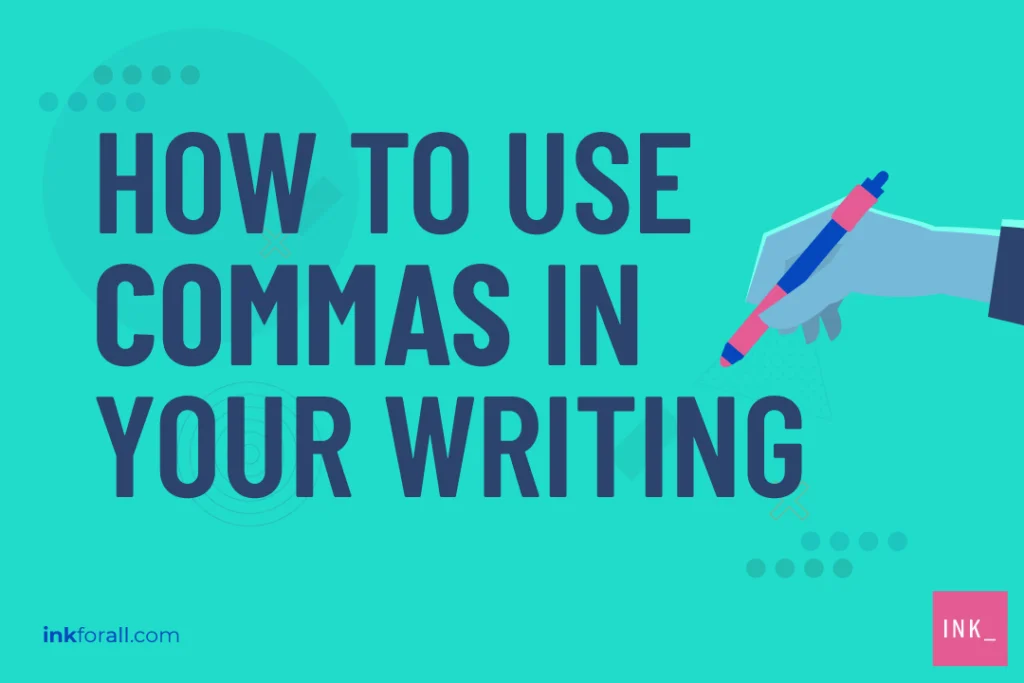

What is a Comma?
A comma is a punctuation mark that separates words, not letters.It adds clarity to any written content by indicating pauses or transitions. What’s more, commas can help join ideas and make the relationships between them clearer.
You may use commas in lists, addresses, dates, and in numbers greater than 999. This punctuation is also often used after introductory clauses and for clauses that begin with conjunctions like and, which, such as, but, or, yet, for, nor, and so. Lastly, quotations, interrupters, and some parenthetical statements require commas as well.
A comma resembles another piece of punctuation — the apostrophe. However, instead of appearing at the top-right corner of a letter, a comma is placed at the lower-right corner of the last letter of a word.
When Do You Use a Comma?
Use a Comma in these situations:
- After a dependent clause at the beginning of a sentence
- After introductory adverbs and phrases like although, interestingly, and in fact.
- After a freestanding “yes” or “no”
- After directly addressing someone
- Before coordinating conjunctions (like and, but, for, or, nor, yet, so) that join two independent clauses
- To offset nonessential or nonrestrictive clauses
- To offset appositives
- To offset interrupters and parenthetical elements
- Before question tags
- To separate list items
- After the day in the month-day-year format
- Between the day of the week and a date in the day-month-year format
- After every three numbers for numbers greater than 999
- To separate cities from states
- To separate proper names from titles
- Between coordinate adjectives
- Between attributive tags and quotations
- Inside quotation marks in American English
Do not use a comma in these situations:
- To replace a period or semicolon. This creates a comma splice.
- To offset restrictive or essential clauses
- To separate a subject from its verb
- To separate two nouns that form a compound subject or compound object (two separate nouns doing the same thing)
- To separate two verbs that form a compound predicate (one subject that does two things)
- After the word “than” in comparisons
- Between a month and a year
- In the day-month-year format for dates
- Before and in a list of just two items
Let’s take a closer look at when you need to use a comma in your writing.
Commas After Introductory Words, Phrases, and Clauses
After a Dependent Clause at the Beginning of a Sentence
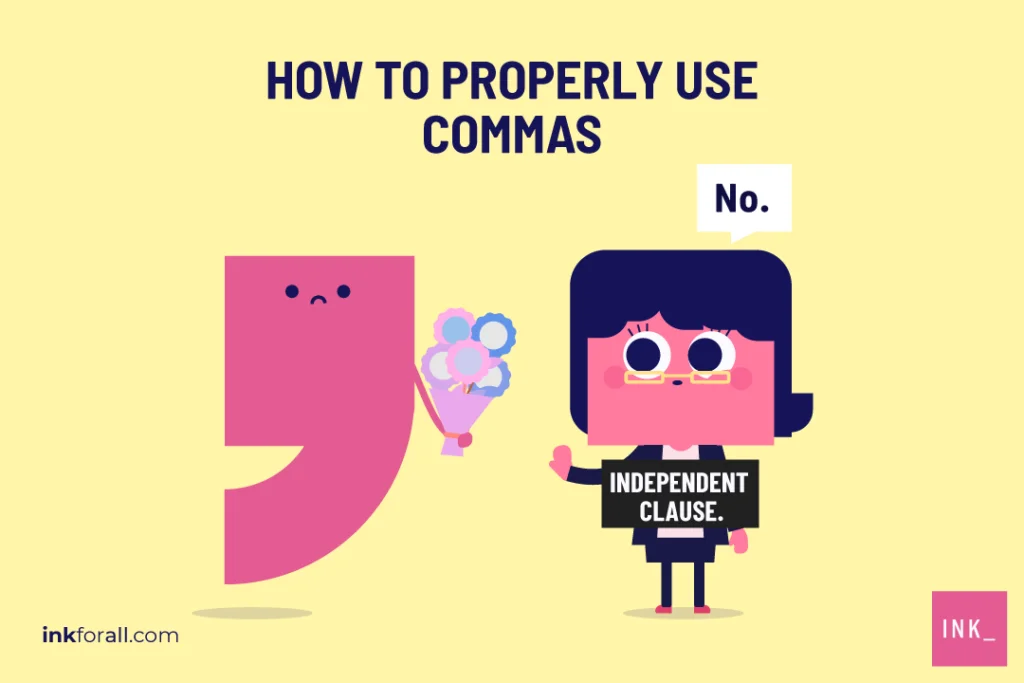

After Introductory Adverbs and Phrases
After a Freestanding Yes or No
To Directly Address Someone
Commas With Coordinating Conjunctions Connecting Independent Clauses
Independent clauses have this name because they can function as complete sentences on their own. Two independent clauses might be separate sentences, but they also might express ideas that are related. In this case, we can join these separate thoughts using a coordinating conjunction.
The comma before the coordinating conjunction is like the glue that holds these two independent clauses together.
Use a comma before these coordinating conjunctions when they join two independent clauses:
Do You Need a Comma Before Especially?
Use a comma when the word “especially” divides a parenthetical phrase. A parenthetical phrase describes nonessential information that is added to a sentence. The info does not change the sentence’s meaning.
In the sentences above, especially acts as a conjunction. You don’t need a comma when especially is an adverb.
Commas With Nonessential Words or Phrases
Try this quick trick to confirm whether or not you need commas around a particular word or phrase. First, remove the word or phrase from the sentence. Second, ask yourself: Does the sentence still make sense? Did the meaning change?
If the meaning doesn’t really change, then you need a comma.
This is because the word or phrase represents a nonrestrictive or nonessential clause. In other words, there’s nothing that restricts us from removing it from the sentence. It’s not essential to the meaning of the sentence.
In this example, try removing the phrase which only seats six.
Sure, we lose a bit of detail. But, the core meaning of the sentence doesn’t change.
Therefore, which on seats six is a nonrestrictive clauses that we should offset with commas to show this.
If the meaning does change, then you don’t need a comma.
This is because the word or phrase represents a restrictive or essential clause. In other words, there is something that restricts us from removing it from the sentence. It is essential to the meaning of the sentence.
Commas With Appositives
Similarly, you should always use commas to offset a nonrestrictive or nonessential appositive. Appositives are nouns or noun phrases that identify the nouns that come right before them.
Easily test if a word or phrase is restrictive or nonrestrictive by removing it from the sentence.
If you sentence still makes sense and the meaning doesn’t change, then the phrase is nonrestrictive. As a result, you need to use commas:
However, if you sentence does not make sense or the meaning has changed, then the phrase is nonrestrictive. As a result, you don’t need to use commas:
Commas With Negations
In general, commas can help clarify what we mean. One specific example is using commas to offset contrasted coordinate elements like negations.
Commas With Interrupters and Parenthetical Elements
Interrupters are words or short phrases that appear in the middle of a sentence. They help show emotion, add emphasis, or convey tone.
Parenthetical elements are a type of interrupter. They represent an aside. For example, they add additional information that provides more detail but isn’t essential. We show that they are not essential by offsetting them with commas, dashes, or parenthesis.
In this way, interrupters and parenthetical elements behave like nonrestrictive clauses. Offsetting them with commas helps show that they are nice to have, but not essential.
We know we need commas to offset nonrestrictive or nonessential clauses. This is because this type of clause adds extra information to a sentence without changing the core meaning.
Commas Before Question Tags
A question tag is a word or phrase added at the end of statement that turns the sentence into a question. They are a way to encourage your audience to agree with you.
Since you can remove a question tag without changing the meaning of the sentence, think of a question tag as a nonrestrictive or nonessential clause.
As a result, you should always use a comma before the question tag.
Commas With Lists
Separate List Items With a Comma
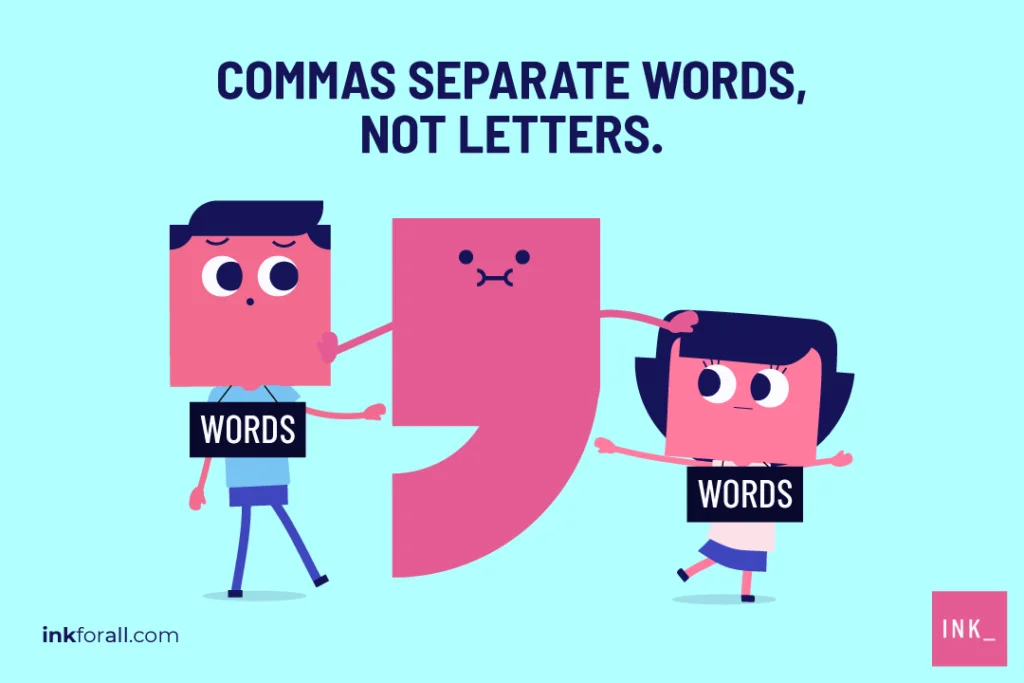

When to use an Oxford (Serial) Comma
For lists of three or more items, you can use an Oxford comma before the coordinating conjunction. Because it helps separate items in a series, it is also called a serial comma.
Clarify a List
Sometimes, omitting or including a serial comma can change the meaning of the sentence.
Without the serial comma, this sentence could mean two completely different things:
- Option 1: Sarah had lunch with one person (her best friend that collects butterflies and cheats on her husband)
- Option 2: Sarah had lunch with three different different people.
Option 1: Sarah only had lunch with one person, her best friend.
In this case, the phrase a butterfly collector and an unfaithful spouse is acting as an appositive that identifies her best friend.
Since this appositive is nonrestrictive, we need to use a comma before the appositive.
Option 2: Sarah actually had lunch with three different people.
In this case, phrase a butterfly collector and an unfaithful spouse is not acting as an appositive.
Instead, the phrase a butterfly collector describes one person and the phrase an unfaithful spouse describes another person. To make it absolutely clear that we are talking about three separate people instead of one, we should use a serial comma.
Commas with Dates
When to use a Comma with Dates
Month-day-year Format
Day of the Week + Date
When not to use a Comma with Dates
Day-month-year Format
Only Month + Year
Commas With Numbers
A comma represents the thousandths place of a number. You place it between the digits in the thousands and hundreds spots.
One comma means you are working with a number in the thousands. This number may be as small as 1,000 or as large as 999,999.
A number with two commas has a value in the millions. This number should range from 1,000,000 to 999,999,999.
In the United States, people use decimals to separate integers from fractions. Other countries, such as Japan, China, and Singapore, prefer commas.
Commas With Names
Commas with Addresses
It’s important to format your address correctly if you’re shipping a package or mailing a letter.
Between the City and State
In the United States, addresses typically require a comma between the city and state.
123 Main Street
St. Louis, MO 63114
When Formatting an Address in a Sentence
Commas Between Coordinate Adjectives
Coordinate adjectives modify the same noun to the same degree. In other words, they coordinate with one another to describe a noun.
When you’re not sure if adjectives are coordinate or not, try switching around their order. Does the sentence still make sense? Does it still sound correct?
Let’s say that the sentence still makes sense and sounds correct. Then, the adjectives are coordinate and you need a comma to separate them.
However, let’s say that the sentence does not still make sense. Or, it sounds incorrect.
Then, the adjectives are not coordinate and you don’t need a comma between them.
Commas With Quotations
Between Attributive Tag and Quotation
An attributive tag, or dialogue tag, identifies the speaker. For example, “she said” and “the professor explained” are attributive tags.
Attributive tags can appear at the beginning, middle, or end of a sentence. Use a comma to separate the attributive tag from the quotation.
You don’t need a comma if the quotation ends in an exclamation point or question mark.
Inside Quotation Marks
American English:
British English:
What Are Comma Splices?
Comma splices are a common error. They occur when someone joins two independent clauses with an unnecessary comma. You can prevent this problem by adding a conjunction or breaking the clauses into two separate sentences.
You can also turn the second half of your sentence into a dependent clause. This eliminates the need for a comma.
You can identify a comma splice by reading each half of your sentence separately. Can each section stand on its own? If so, you don’t need a comma unless you add a conjunction.
Why Do We Use Commas?
However, you should not always place a comma where you would pause in a verbal conversation. Many people overuse commas, which leads to confusion. It also makes sentences choppy and hard to understand.
See if You’ve Mastered how to use Commas With a Quick Quiz
How to use Commas Question #1
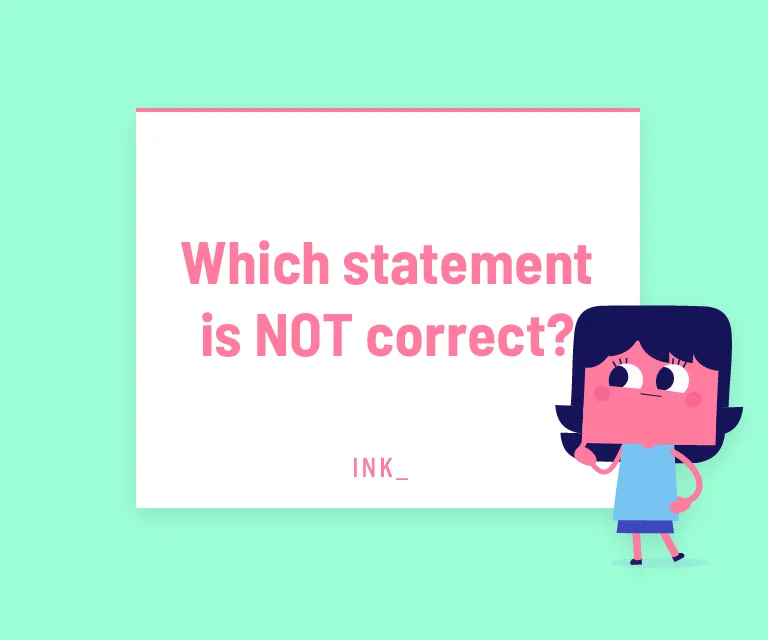

The answer is B. A comma is a punctuation mark that separates a list or indicates a pause between words. You can't use it to separate letters.
Comma Question #2
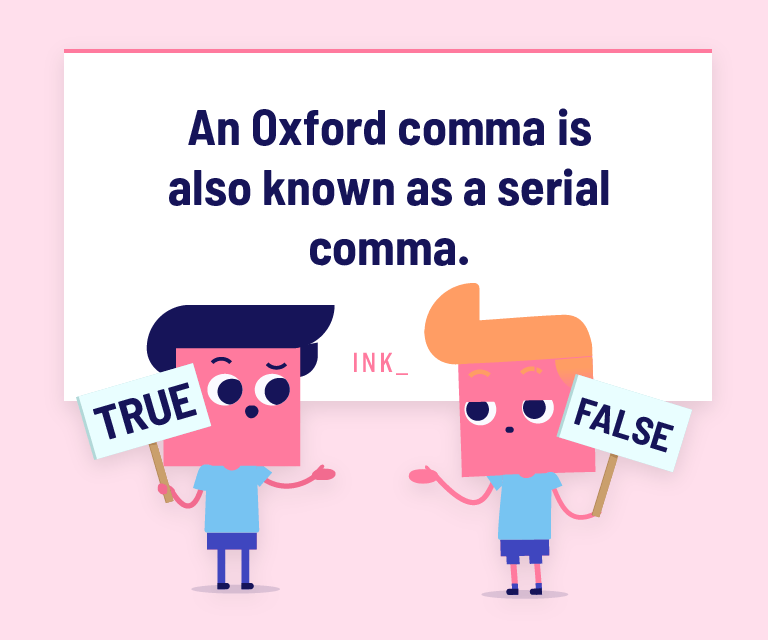

The answer is TRUE. An Oxford comma is also called a serial comma because it appears in a list of three or more items.
Commas Question #3
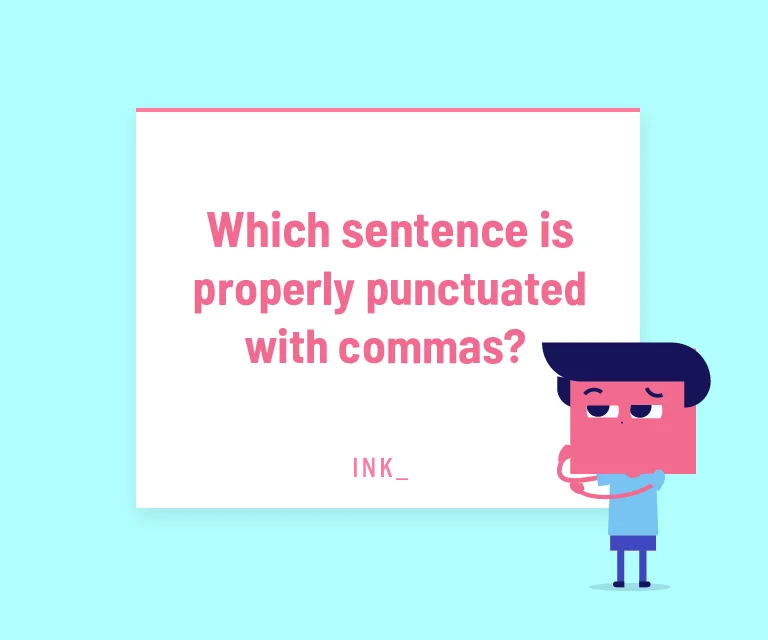

The answer is B. Place an oxford comma before the coordinating conjunction.
How to use a Comma Question #4
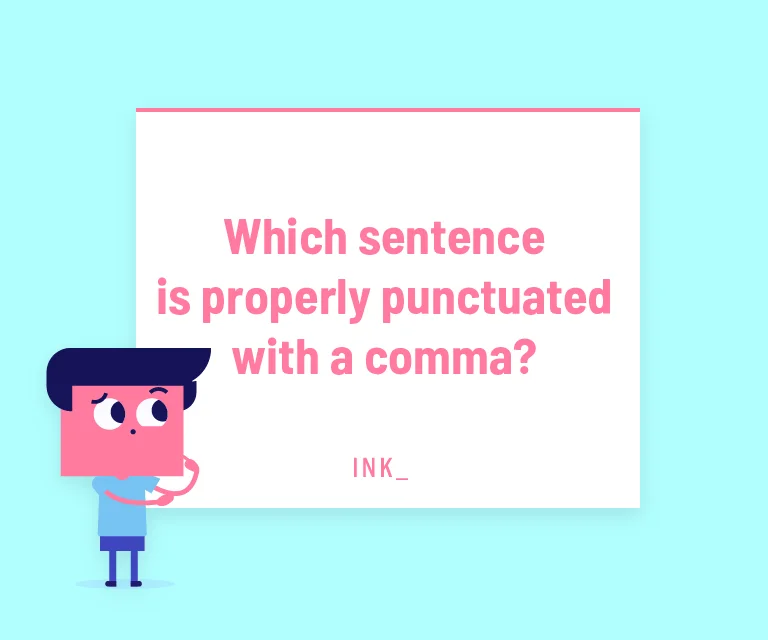

The answer is B. Don't use a comma to join two independent clauses without a conjunction. This is called a comma splice.
Comma Question #5
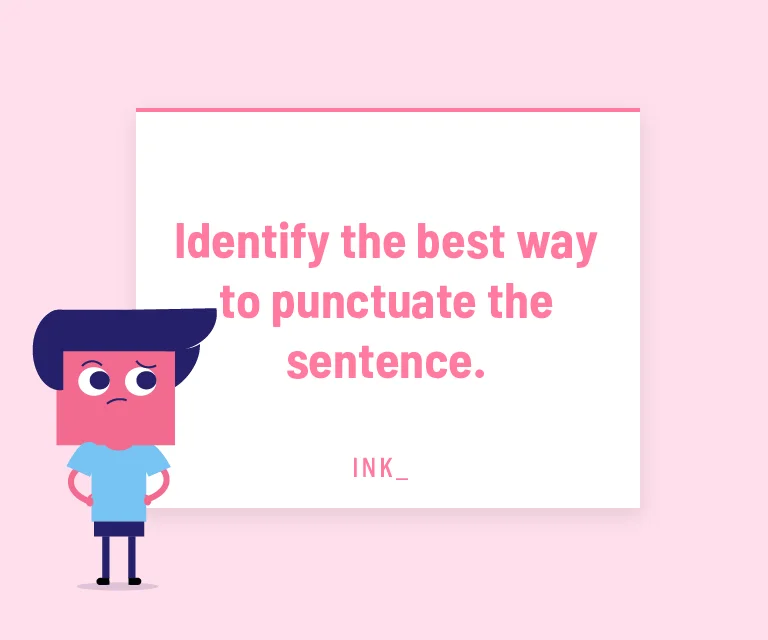

The answer is B. The comma represents the thousandths place of a number.
Commas Question #6
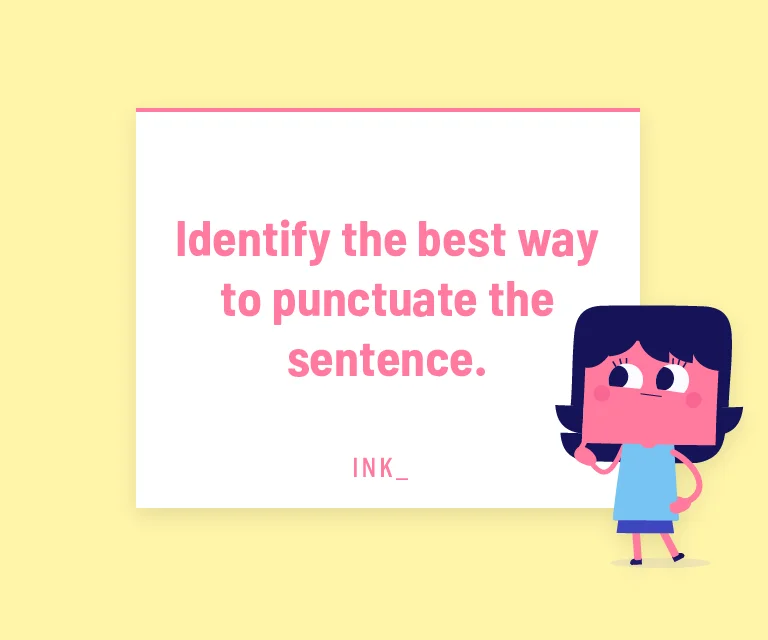

The answer is A. Use additional commas as necessary to format addresses in a sentence.

This was beyond helpful and will continue to be! Thank you so much. The examples really help hammer in the point!